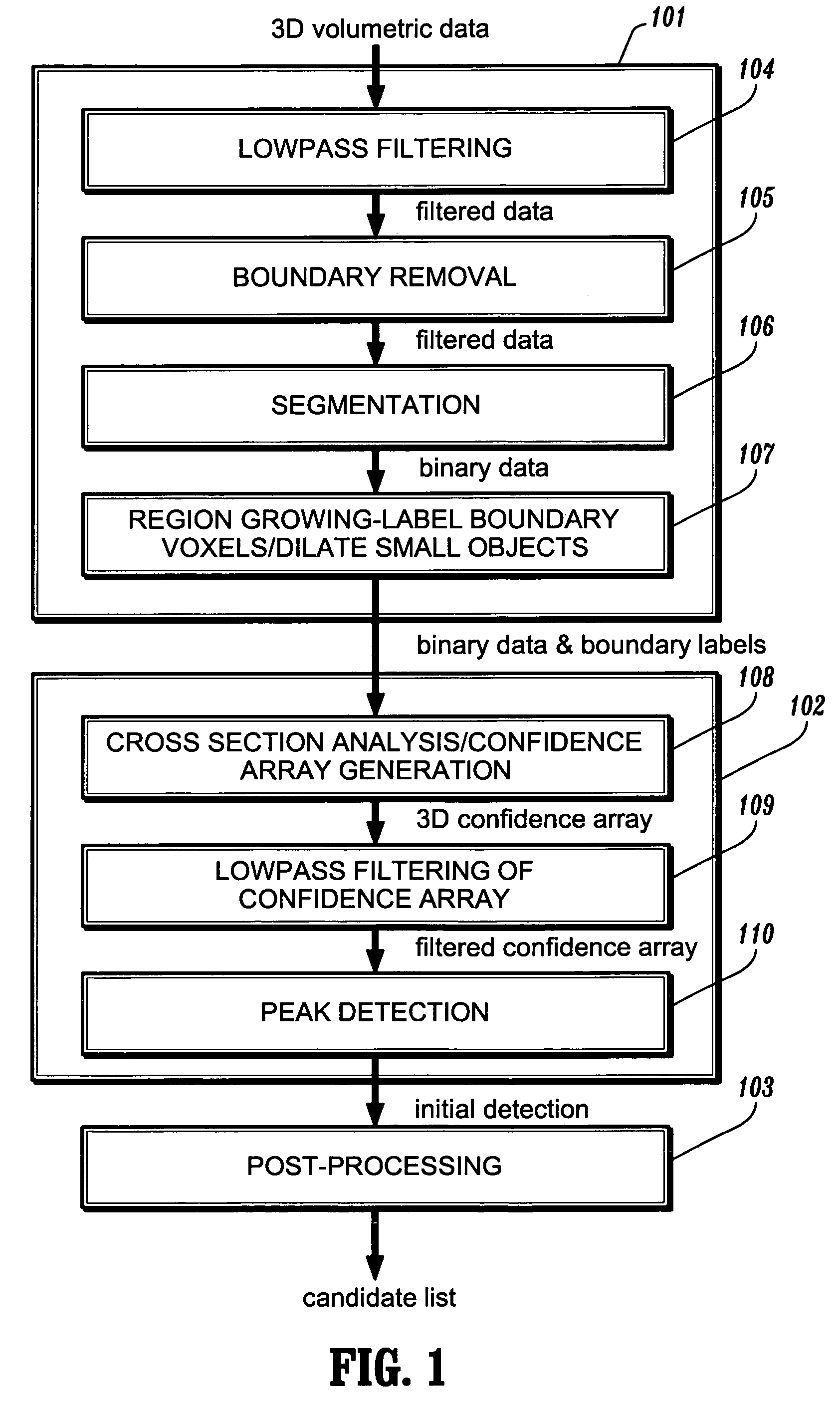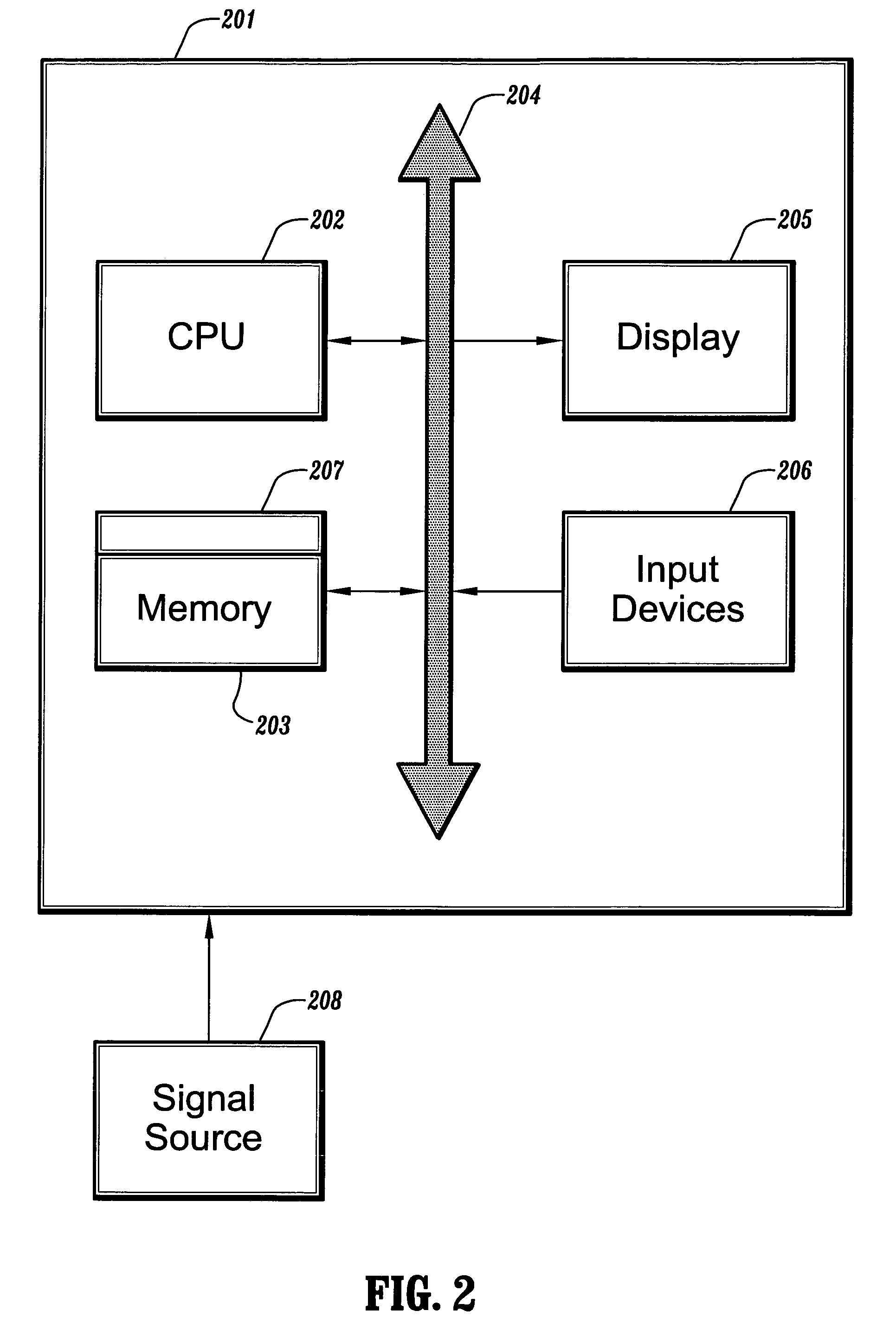Candidate generation for lung nodule detection
a candidate generation and lung nodule technology, applied in the field of image analysis, can solve the problems of difficult design of a method that is able, huge amount of information that needs to be processed in 3d volumetric data, and is typically not practical to employ a sophisticated and computationally expensive analysis techniqu
- Summary
- Abstract
- Description
- Claims
- Application Information
AI Technical Summary
Benefits of technology
Problems solved by technology
Method used
Image
Examples
Embodiment Construction
[0020]Typically, a lung nodule exhibits compact round shape property. It may either be a solid object or occludes with vessel tree. A number of techniques are available to determine 3D shape features that can be used to differentiate between compact round shaped nodules from objects with other shape properties. However, these techniques are not efficient in such a scenario for a number of reasons such as robustness to noise, irregularity of the targeted objects (difficult to estimate a consistent Gaussian curvature value), difficulty in defining targeted region of interest, and computational cost. According to an embodiment of the present disclosure, a method generates nodule candidates efficiently in 3D volumetric data (e.g., computer tomography data (CT) or magnetic resonance imaging data (MRI)) using shape features that are derived from a number of cross section analysis. It has been demonstrated on two sets of HRCT images that such a technique can achieve a very high accuracy wi...
PUM
| Property | Measurement | Unit |
|---|---|---|
| size | aaaaa | aaaaa |
| computational time | aaaaa | aaaaa |
| size | aaaaa | aaaaa |
Abstract
Description
Claims
Application Information
 Login to View More
Login to View More - R&D
- Intellectual Property
- Life Sciences
- Materials
- Tech Scout
- Unparalleled Data Quality
- Higher Quality Content
- 60% Fewer Hallucinations
Browse by: Latest US Patents, China's latest patents, Technical Efficacy Thesaurus, Application Domain, Technology Topic, Popular Technical Reports.
© 2025 PatSnap. All rights reserved.Legal|Privacy policy|Modern Slavery Act Transparency Statement|Sitemap|About US| Contact US: help@patsnap.com



